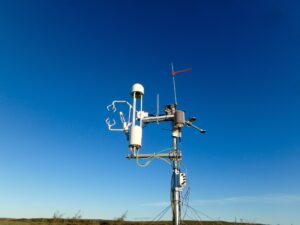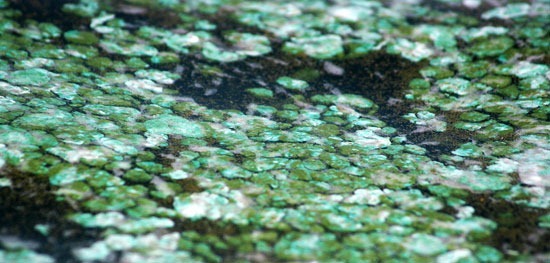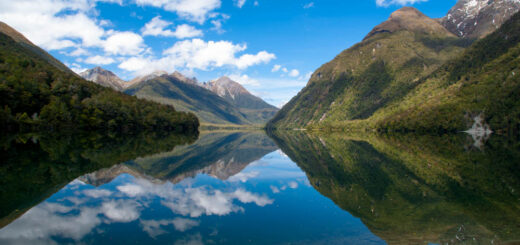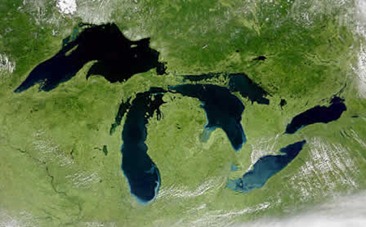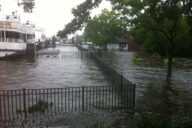Research Brief: Measuring Lake Superior Evaporation with an Eddy Covariance System at Stannard Rock Lighthouse
0Lake evaporation data can be notoriously complex to measure due to differences between over-lake conditions and those on the shore, where a large portion of monitoring occurs. Innovations in over-lake measurements using data buoys or near-lake eddy covariance stations.
A 2024 dataset published in Scientific Data presents 15 years (2008-2022) of eddy covariance data from Stannard Rock Lighthouse on Lake Superior. The article shares the instrumentation for the system, as well as noting data availability.1
The lighthouse is located on an island 38 km southeast of Manitou Island and 72 km north of Marquette, Michigan, and offers an ideal site for measuring over-lake evaporation year-round due to its isolation from other landmasses.
Instrumentation of the Stannard Rock Lighthouse Eddy Covariance System
Wind speed was measured using a sonic anemometer, and water vapor and carbon dioxide were measured using an open path CO2/H20 gas analyzer and krypton hygrometer. The system includes a data logger that collects data every 30 minutes, with data retrieved during site visits or remotely via radio telemetry.
Air temperature and relative humidity were measured using a shielded probe. Atmospheric pressure was measured using a pressure transducer. A vane anemometer measured horizontal wind speed and direction. Incoming shortwave radiation was measured with a pyranometer, while longwave radiation was measured with a pyrgeometer.
Water surface temperature was estimated using an infrared thermometer, though the article notes that “it is advised to use this variable with caution; [as] this measurement was unreliable at times (primarily the winter months) due to condensation or frost formation inside the instrument cavity, as well as interference from other surfaces (lighthouse or sky).”1
Water surface data can alternatively be obtained from the Great Lakes Surface Environmental Analysis dataset.
Data Use Notes
The dataset is relatively continuous, although periods of missing data occasionally occurred due to insufficient power. The study notes several longer gaps: March 20-May 5, 2009; May 25-Sept 23, 2015; May 1-June 1, 2018; and December 16, 2018-June 12, 2019.
Some of the technology in the eddy covariance system is older, and due to the remote location, gathering high-frequency measurements is difficult. However, the article notes that the dataset “provide[s] a useful and unique estimation of evaporative fluxes over a long record that can be used to further understand variations in water levels, regional climatology, lake hydrodynamics, and lake-effect snowfall, as well as to inform water management.”1
The Stannard Rock Lighthouse eddy covariance dataset can be downloaded here.
Source
- Nicholls, E.M., Spence, C., Hedstrom, N. et al. Lake Superior evaporation: A long-term eddy covariance dataset at Stannard Rock Lighthouse (2008–2022). Sci Data 11, 1152 (2024). https://doi.org/10.1038/s41597-024-03940-7




